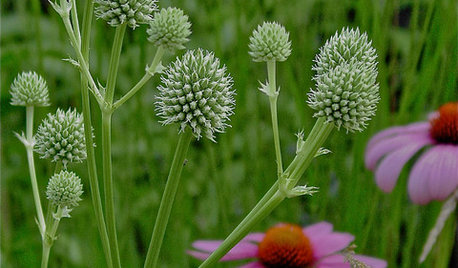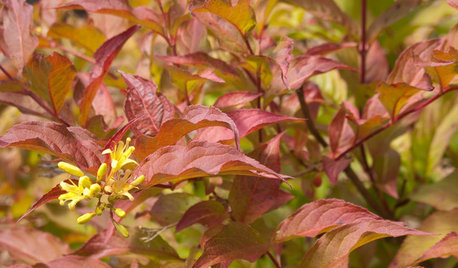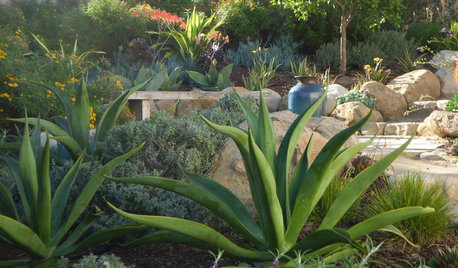Baby Native Azalea Questions
davidl_ny5
16 years ago
Related Stories

GARDENING GUIDESGreat Native Plant: Rattlesnake Master for Unique Interest
Serpents actually don’t give a hoot about this prairie wildflower, but insects do — and the foliage is a big draw too
Full Story
INSPIRING GARDENSNative Plants Bring 10 Southern California Front-Yard Gardens to Life
Rare plants, rain gardens and wildlife habitats are just a few of the features showcased on the 2016 Theodore Payne Native Plant Garden Tour
Full Story
GARDENING FOR BUTTERFLIES3 Ways Native Plants Make Gardening So Much Better
You probably know about the lower maintenance. But native plants' other benefits go far beyond a little less watering and weeding
Full Story
GARDENING GUIDESWe Bust 4 More Native Plant Myths
Have you been taken in by these fallacies about gardening with native plants?
Full Story
GARDENING GUIDESOh, Deer! 10 Native Flowers That Stand Up to the Herds
Keeping a garden amid hungry deer can be hard, but these plants should fare well
Full Story
EARTH DAYHow to Design a Garden for Native Bees
Create a garden that not only looks beautiful but also nurtures native bees — and helps other wildlife in the process
Full Story
GARDENING GUIDESLet's Weed Out 4 Native Plant Myths
Plant wisely for a garden that supports pollinators and requires less work
Full Story
GARDENING GUIDESGreat Design Plant: Asclepias Incarnata for a Butterfly Garden
Beautiful swamp milkweed makes it easy to help monarchs and other pollinators in eastern U.S. gardens
Full Story
GARDENING GUIDESGreat Design Plant: Northern Bush Honeysuckle, a Bronze Beauty
It helps control erosion and takes sun or shade. The butterflies love it. But the best part of this shrub may be the vivid foliage
Full Story
GARDENING GUIDESDecorate the Landscape With Versatile Agave
Beautiful, succulent leaves reach toward the sky, adding texture and beauty to the drought-tolerant landscape
Full Story





rhodyman
davidl_ny5Original Author
Related Professionals
East Rancho Dominguez Landscape Architects & Landscape Designers · Fitchburg Landscape Architects & Landscape Designers · Prairie Ridge Landscape Architects & Landscape Designers · Wixom Landscape Architects & Landscape Designers · Waterbury Landscape Contractors · Bergenfield Landscape Contractors · Biloxi Landscape Contractors · Cambridge Landscape Contractors · Cordele Landscape Contractors · Corona Landscape Contractors · Kerman Landscape Contractors · Saint Paul Landscape Contractors · Palos Hills Landscape Contractors · Clearfield Landscape Contractors · Castaic Gardeners & Lawn Caredavidl_ny5Original Author
sandyhill
davidl_ny5Original Author
davidl_ny5Original Author
rhodyman
davidl_ny5Original Author
rhodyman